Juniper coastal "Shlyager": description and tips for growing

Juniper is one of the most popular conifers in the world. They can decorate a personal plot or a park area. A popular representative of this family is the variety "Shlyager", which is characterized by elegance and slow growth. This plant not only has high decorative qualities, but is also able to fill the air with a pleasant healing aroma.

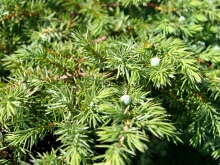
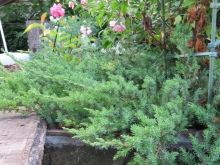
Description
Juniper "Shlyager" is listed in the Red Book. The konferta looks like a low bush. Due to his some capriciousness, not every gardener plants this representative of the flora on his site. However, if you follow all the necessary rules of care, you can get a worthy coniferous representative on your own territory.
The coastal juniper "Shlyager" is a creeping plant. For 10 years in height, it can grow up to 200 cm.The crown of the conferta is 100 cm in diameter.

However, often at a young age, the shrub has a height of 0.4 m. The branches of this variety have a red-brown tone. Cones are round in shape, painted in a deep blue color and covered with a bluish bloom.
The foliage of "Shlyager" is needle-like, flat-toothed, has a length of 10 to 15 mm and a width of 1 mm. The needles are characterized by the presence of prickly tips and a green color with different shades. Growing on the site, this representative of the Cypress family forms a prickly bright carpet. This frost-resistant shrub has a fibrous root system and flexible shoots.


Landing
Like other types of juniper, this conference should be planted in a well-lit area with the desired presence of an openwork shade... This condition guarantees the decorative appearance of the needles in the future. The best options for seedlings are those that are grown in a container. They are able to quickly take root, are characterized by more rapid growth. To remove the juniper easily from the container, the soil in it must be thoroughly watered.
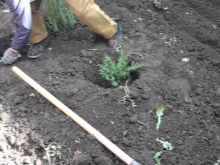
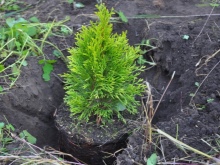

It is unacceptable to use a young plant that has damaged branches and rotten roots.
You should not plant this type of plant near fruit and berry crops, as this can lead to the spread of fungal infection. The soil on which the "Shlyager" will be planted should be carefully dug up, adding peat, sand and turf soil to the substrate in the proportion 2X1X1. If the soil is too acidic, then add wood ash to it. Correct landing of a conferta includes several main steps.
- Planting holes should be located at a distance of no less than 150-200 cm, since adult plants are characterized by a large crown diameter.
- The size of the hole should be 2 times larger than the volume of the plant rhizome.
- The seat must have a depth of 0.5 to 0.7 m.
- The bottom of the hole should be covered with a drainage layer; broken red brick, large pebbles, sand can be used as the main material. The height of this layer should be about 20 cm.
- In the central part of the planting site, it is necessary to fix the seedling, sprinkling it with a prepared substrate. At this stage, it is important to leave the root collar of the plant above the ground surface.
- After planting, the ephedra must be watered until the liquid penetrates to the roots.
- On the second day after planting, mulching of the trunk circle is required.

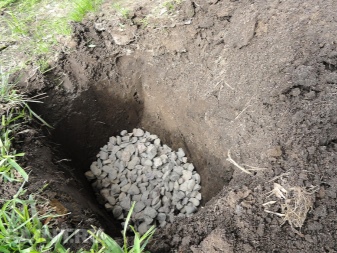

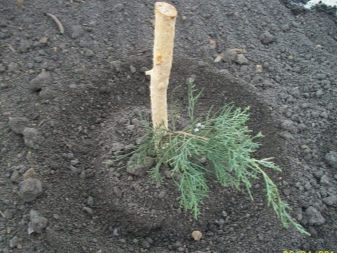
Care
According to reviews of gardeners who grow "Shlyager", this plant is not capricious in terms of watering and fertilization. There are practically no problems with growing.
Although caring for a juniper is not difficult, it is still necessary to grow a healthy and beautiful plant.
Watering
After the bush is planted, it should be watered abundantly for 7 days. Further, an already grown representative of the flora can be irrigated less often. If the summer turned out to be hot and dry, then the conference should be watered twice or three times per season. The juniper needs sprinkling more often: about 2 times a week in the evening.
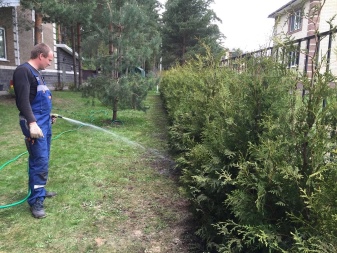
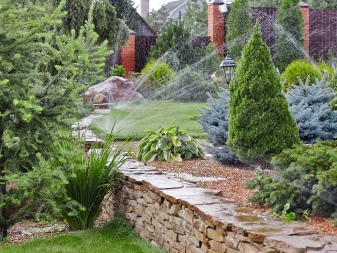
Loosening, mulching
It is necessary to loosen the "Schlyager" near-trunk circle superficially immediately after the irrigation procedure. Weed vegetation is required to weed as needed. Mulching is carried out with sawdust, wood chips. In this case, the layer should be from 5 to 8 cm.
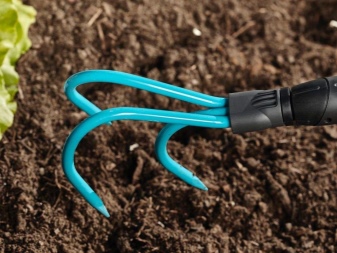

Top dressing
Fertilizers should only be used on young plants. In spring - in April-May - the bush is fed with nitroammophos. For this purpose, it is necessary to add about 30 g of substance per 1 m 2. And you can also use a complex fertilizer for conifers.
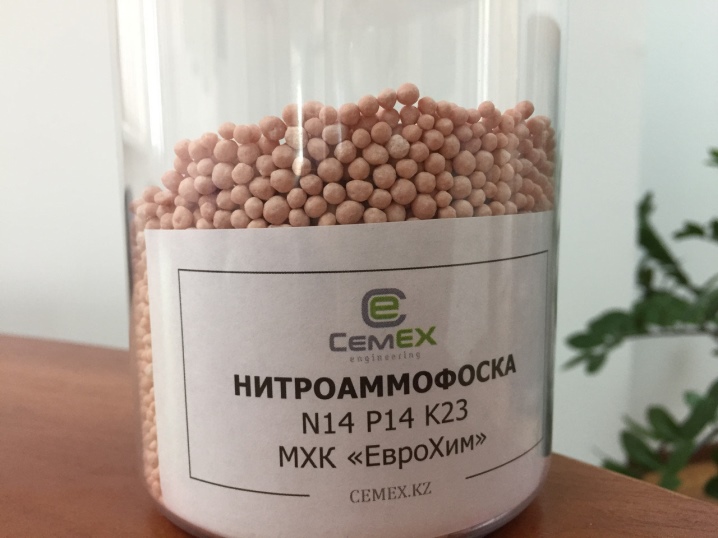
Pruning
The coastal variety of this plant grows slowly and therefore requires sanitary and formative pruning. In the process of sanitary, damaged and deformed branches are cut off.
The shaping procedure is performed at the beginning of the spring period, before the juice begins to flow.
At the same time, it is permissible to cut off only a third of the growth over the past year. Each of the sections must be treated with a fungicide, and then the plant must be fed.


Preparing for the winter period
Despite its good frost resistance, this type of shrub, like many others, needs shelter for the winter. In the autumn, it is worth carrying out sanitary pruning, after which the plant's near-stem circle must be sprinkled with a 10-centimeter layer of peat. Young juniper can be covered with spruce branches, and for an adult, tying branches will be enough.
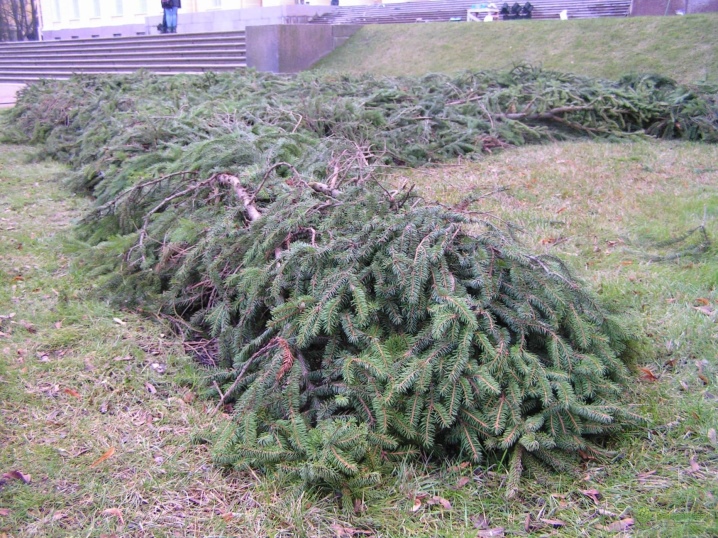
Diseases and pests
Coastal juniper has good disease resistance. However, there are cases of infection of the bush with the following ailments:
- rust, fusarium;
- branch drying;
- alternariosis, necrosis of the cortex.
"Shlyager" needs preventive treatment and treatment with fungicides, as well as preparations based on copper. Gardeners notice the invasion of the juniper by spider mites, aphids, juniper moths, and scale insects. For prophylactic purposes, the conference should be sprayed with insecticides in spring and autumn.
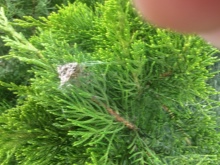


Reproduction
New Coastal Juniper Sapling can be obtained by seed or cuttings. For seed propagation, it is allowed to use exclusively fresh material, which is sown before winter. Seeds of "Shlyager" are slowly emerging, so they need scarification. For this, the planting material is treated in sulfuric acid for half an hour.
The emergence of seedlings can be observed next spring.
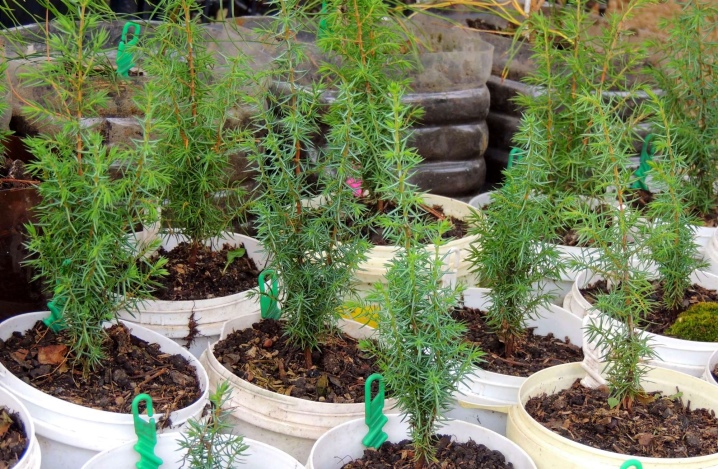
In the second method of propagation, short cuttings with lateral heels are cut and rooted immediately. It is worth carrying out this procedure in greenhouse conditions, since it is still cold in spring. A young shrub is transplanted a year later, when a good root system is formed.
Application in landscape design
The coniferous shrub is considered a real find for the gardener. It is used in the design of the garden and personal plot. The evergreen crown of a coniferous plant is able to decorate the territory all year round. The unpretentious plant can be used in design projects that are designed for a long time and looks great in any landscape.
Junipers in the design of the territory are considered a universal material, since compositions with their participation can be used in ensembles of different styles. They can successfully fill a flower bed, lawn.The creeping bush can be used in the design of alpine slides or eco-gardens.
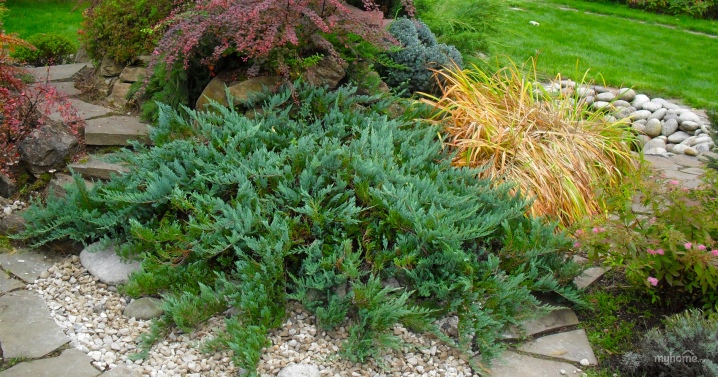
Not every plant will feel good in the neighborhood of an ephedra. This applies to clematis, peony, roses and other large-flowering representatives. But a small ground cover plant will be an excellent neighbor for a juniper. Spirea, boxwood, saxifrage, as well as heather, hydrangea can be planted near the juniper. Small-flowered and other conifers can complement the picture.
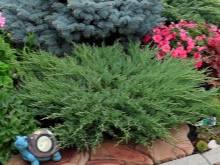
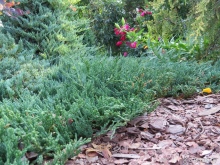
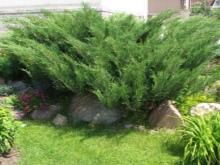
"Shlyager" is perfect for a garden with the correct geometry, decorated in English, Scandinavian or Japanese style. In landscape compositions with stones, you cannot do without conferta.
Juniper can be used as a central plant or as a background. Coastal juniper can form a dense, spiky carpet that will stand out from other vegetation.
The peak of "Shlyager" decorativeness is considered to be the beginning of the summer season, when new shoots grow. In landscape design, it is used as a tapeworm against the background of a lawn. The plant favorably decorates the territory of the administration or a private garden. This bush is an excellent option for decorating hedges, landscaping terraces, roofs, loggias, balconies.
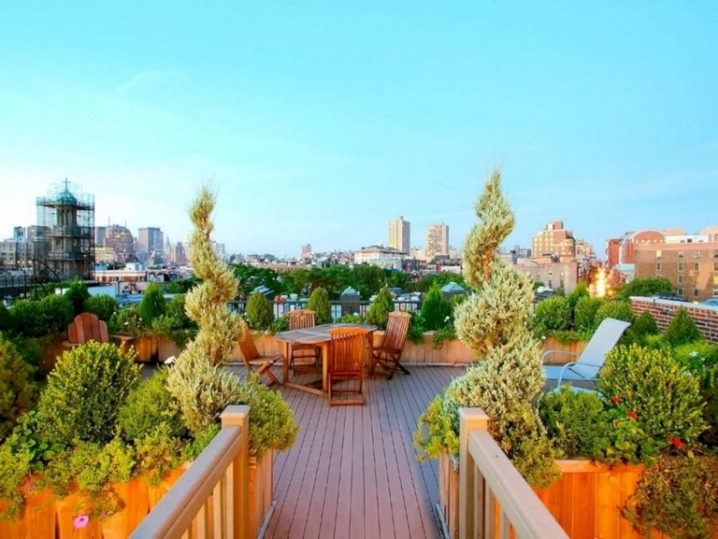
Juniper is a type of undemanding vegetation that looks beautiful all year round. Since it is durable, the plant is able to decorate and complement the design of the site for 10 years without requiring special care. This conferta has not only decorative properties. Growing it on your garden plot, you will get a rich source of medicines, since needles, cones, and bark contain useful substances. Decoctions, infusions, juniper baths help with many conditions.
For juniper varieties, see below.



































































The comment was sent successfully.